Beovox S4500 Passive Loudspeakers
BeoVox Loudspeaker
Production: 1981 - 04/1983
Designer: Jacob Jensen
Beovox S4500 (type 6318) Uni-Phase loudspeakers could handle 45 watts RMS (75W music power) and were based upon the earlier Beovox S45.2 loudspeakers.
They were not very popular and were subsequently withdrawn after but a short period of time.
Bang and Olufsen 4500
BeoVox 4500 Passive Loudspeakers
BeoVox Loudspeaker
Production: 1992 - 01/1996
Designer: Gideon Lindinger-Lowy
They may not have looked like high-specification loudspeakers - more like works of art - but their sound immediately gave them away. Even at full volume, they kept the total sound picture in perfect balance.
Bang & Olufsen's BeoLab and Beovox 5000 / 3000 speakers had both the voice and the looks for a leading, acoustic role. And because of their looks, they were known as Bang & Olufsen's range of panel loudspeakers. Panel loudspeakers were one of the most exciting and interesting examples of how Bang & Olufsen united advanced technology and stunning design to achieve totally new effects.
Design as a work of art
The elegant, flat-panel loudspeakers were created to hang on the wall. And with their calm surfaces of blue or grey fabric coupled with polished steel, they could be taken for works of art. But the design was only partly for visual effect. The form of the panel speakers was founded on an advanced, acoustic principle that uses the wall as an active part of the sound reproduction process - without causing the wall itself to vibrate.
Optional display and amplifier
The panel loudspeakers were available in two sizes - each with or without an amplifier and a display showing which source was playing and at what volume. Also, it told you which track number on a CD or tape you were listening to. With display and amplifier, the loudspeakers were called BeoLab. Without, they were called Beovox. The option depended upon which Bang & Olufsen sound system was connected. BeoLab speakers were designed to match Beosystem 6500, 4500, 3500, and Beocenter 9500 and 8500.
Mounting Options
Wall mounting brackets were supplied with this model. No other mounting solution wall was offered.
Bang & Olufsen's preferred supplier for brackets and stands, STBbrackets, have made a range of solutions specifically for this model. Distributed throughout the World by the Bang & Olufsen store network, the STB options add to the diversity of mounting options and positions available.
»Wall Mounting Brackets
Wall Bracket for BeoVox & BeoLab flat panel speaker range
WB3000 has been introduced to meet a growing demand to mount Bang & Olufsen flat panel speakers to the wall. The bracket (sold as a pair) is a faithful reproduction of the original which was supplied with the speakers. These beautiful speakers can now be installed onto the wall, where they are a genuine and authentic Bang & Olufsen statement.
BeoVox 4500 Passive Loudspeakers technical specifications
BeoVox 4500 (Flat Panel) Passive Loudspeakers Product Specifications
Long-term maximum input power 90 W
Maximum noise power 45 W
Impedance: 8 ohms
Frequency range +4 -8 dB 75 - 20,000 Hz
Power at 94 dB SPL 5 W
Sensitivity 1 W 87 dB
Cabinet principle: Bass reflex Woofer: 13cm
Tweeter: 2.5cm
Crossover frequency 3500 Hz
Net volume 5.4 litre
Dimensions W x H x D : 45 x 38 x 8cm
Weight 5kg
Beolab 4500 Active Loudspeakers
BeoLab Loudspeaker
Production: 1992 - 1996
Designer: Gideon Lindinger-Lowy
BeoLab 4500 was a wall speaker which was no more than 8cm deep. It had a built-in (active) amplifier and extended bass reproduction, which used the wall as a reflector. The display told you which source that BeoLab 4500 was reproducing at any one time.
There were two versions of this panel loudspeaker. The pure Beovox 4500 loudspeaker (shown here) and BeoLab 4500 with built-in amplifier and Dynamic Bass Equaliser (shown in the main picture above), automatically compensated for the inability of the human ear to perceive deep bass tones at low volume
The design of BeoLab 4500 and Beovox 4500 was based on an acoustic principle that allowed the loudspeaker to use the wall to enhance the bass level. The cabinet let the sound waves reflect off the wall and out into the room without delay. This made it possible to reduce the depth of the cabinet to just 8cm, so the loudspeaker becomes a natural part of the wall décor.
BeoLab 4500 had a display that indicated sound source, volume, and which track on CD or tape that you were listening to. In looks, it was similar to the BeoLab 5000 active speaker but smaller. The display too was in a green-colored LED as opposed to BeoLab 5000's orange. Both loudspeakers were available with blue or grey fabric.
Mounting Options
Bang & Olufsen's preferred supplier for brackets and stands, STBbrackets, have made a range of solutions specifically for this model. Distributed throughout the World by the Bang & Olufsen store network, the STB options add to the diversity of mounting options and positions available.
Beolab 4500 Active Loudspeakers technical specifications
Types: 6721
AUS 6725 1991
GB 6722 1991
J 6724 1992
USA 6723 1991
Dimensions WxHxD/Weight: 45 x 54 x 8cm / 9 kg
Cabinet finish: Aluminium
Power amplifier modules
1 unit
Mains 6721 EU 230V
6722 GB 230V
6723 USA-CDN 120V
6724 J 100V
6725 AUS 240V
Long-term maximum output power per module*
116 watts
Effective frequency range* 54 - 20,000 Hz
Maximum Sound Pressure Level (stereo, pair) 99 dB
Cabinet Principle Bass Reflex
Woofer 13 cm
Tweeter 2.5 cm
Net volume 5.4 liters
Bass equalizer Dynamic
Typical power consumption 10 watts
Stand-by consumption * According to IEC 268-3 and 268-5
Connections: Power Link
Phono (line)
Speaker Link
Most recent S/W 1.1
Beovision MX4500
BeoVision
Production: 1988 - 05/1990
Designer: David Lewis
A slightly larger version of the Beovision MX3000 this 28″ television suffered from similar faults - especially with its CRT - like its smaller sibling. It was withdrawn from sale after but a year or so.
The television suffered from poor reliability and was never the success that Bang & Olufsen hoped that it would be.
The television was soon after replaced by the Beovision MX5000
Beovision MX4500 technical specifications
Types:
AUS, Multi TXT 3203 (1988 - Jan 1990)
I, Multi TXT 3204 (1988 - Jan 1990)
Multi 3200 (1988 - Jan 1990)
Multi TXT 3201 (1988 - May 1990)
Picture tube size 70cm; Visual picture size 66cm
Picture tube: full square, black matrix, In Line 110 degrees
Operation Beolink 1000
Audio: Aux Link
Screen display; program number; frequency
Picture and Sound adjustments
Sound system: Stereo decoder: A2 built-in, Bilingual sound A2 built-in
Stereo enhancement, mono pseudo-stereo
NICAM stereo
Teletext: 5 languages: S-D-GB-I-F
Teletext memory: 4 complete pages, + 4 page numbers for each TV programme, total 128 numbers
Number of TV programmes: 32
Digital tuning system: VHF + S + Hyper + UHF channels
Tuner range: 45 - 855 MHz
Transposer: French L system built-in
Satellite programmes: prepared for BeoSat RX, AV Link 21-pin
Speaker system, stereo, 2 Log Line
Speaker units: 2 x 7.5cm
Sound power output RMS: 2 x 15 W / 8 ohms
Sound power output music: 2 x 18 W / 8 ohms
Harmonic distortion: < 0.5 %
Intermodulation: < 1 %
Frequency range: +/- 1.5 dB 20 - 20,000 Hz
Power band width: 20 - 12,500 Hz
Signal-to-noise ratio: > 50 dB
Bass control: + 16 - 6 dB / 60 Hz
Treble control: +/- 10 dB / 10,000 Hz
Power supply: 180 - 260 V / 50 - 60 Hz
Power consumption: 85 (63 - 150) W
Stand by: 5 W
Dimensions W x H x D: 65 x 67.5 x 46.5cm
Weight: 40.3 kg
Connections: AV Link, Audio Aux Link, stereo headphones, external speakers
Link compatibility: Datalink
Beovision LX4500
BeoVision
Production: 1990 - 03/1992
Designer: David Lewis
Replacing Beovision LX2502, the Beovision LX4500 was a luxurious 25″ multistandard color television with the benefit of stereo reception.
Fitted with a contrast screen, Teletext, and the possibility of using a motorized stand, the television had a very wide range of color options available for it. It used the Beolink 1000 remote control terminal and offered hi-fi quality sound.
For a novelty value, it was able to keep tabs on other TV programs and sources by way of a Picture-in-Picture module when it could show a small TV image in one corner of its screen. Likewise, it could also offer to the viewer a choice of either four, nine, or sixteen miniature TV clips displaying just what the other stations had to offer.
Datalink connections were built in to link the set with another suitable Bang & Olufsen audio or video product, and Power Link sockets were provided for which to add a pair of Beolab active speakers like Beolab Penta III.
The Beovision LX 4500 was eventually surpassed by the arrival of Beovision LX 5000.
Beovision LX4500 technical specifications
Types:
FMS 3928 (1990 - Feb 1992)
FTS 3978 (1990 - Dec 1991)
GDT 3923 (1990 - Jan 1992)
GNS 3979 (1990 - Dec 1991)
GTG 3922 (1990 - May 1991)
MDE 3927 (1990 - Jan 1992)
MDS 3973 (1990 - Dec 1991)
MDT 3921 (1990 - Feb 1992)
MIS 3982 (1990 - Nov 1990)
MNE 3986 (1990 - Dec 1991)
MST 3920 (1990 - Mar 1992)
MTA 3925 (1990 - Dec 1991)
MTI 3924 (1990 - Dec 1991)
MTS 3970 (1990 - Feb 1992)
CTV system: Multi-standard B/G/L (GB: PAL I)
Colour system: PAL/SECAM, NTSC A/V 4.43 MHz / 3.58 MHz
Picture tube (Visual picture): 63cm (59cm)
Picture tube system: flat square, Hi-Bri, In-Line 110 degrees
Contrast screen with a metalized coating
Design: wide format cabinet
Cabinet: rosewood, grey metallic
Cabinet Rosewood, white, black, red, grey, White Line
Main features:
Operation Beolink 1000, one-way (prepared for two-way)
Sound center balance: between BeoLab and Beovision speakers
Sound system: Built-in NICAM EU + A2 stereo decoder
Built-in NICAM EU + A2 dual language
TV tuner range: 46 - 855 MHz: VHF, S, Hyper, UHF
No. of TV programs: 50
Satellite: prepared for BeoSat LM kit
No. of satellite programs: 64
Signal/noise level: > 35 dB/1 Vpp and antenna signal > 1mV
Crosstalk between sources: > 45 dB / 5 MHz
Teletext FLOF, TOP, 5 alphabet, 6 alphabet (E)
Teletext memory 4 x 50 page nos
Station identification Via Teletext/station naming
Speaker system: 2 x bass reflex
Speaker units: woofer 2 x 7.5cm, tweeter 2 x 5cm
Crossover frequency: 2500 Hz
Long-term max. output power: 2 x 40 W / 8 ohms
Harmonic distortion: < 0.5% at 15 W
Intermodulation: < 1%
Signal-to-noise ratio: > 50 dB weighted 50 mV (NICAM > 70 dB)
Frequency range, audio: 25 - 20,000 Hz +/- 1.5 dB
Power bandwidth: 25 - 20000 Hz
Bass control: +/- 8 dB / 100 Hz
Treble control: +/- 8 dB /10000 Hz
Power supply: 220 - 240 V
Power consumption: 100 (75 - 165) W
Power consumption stand-by: 3 W
Dimensions W x H x D: 77.5 x 47.5 x 42.5cm
Weight: 32.6 kg
Connections: AV Link 2 x 21-pin SCART
Super VHS YC playback 4-pin socket
Audio Aux Link 7-pin socket
Power Link 2 x 8-pin sockets
External speakers 2 x 2-pin sockets
Motorized stand operation 4-pin socket
Aerial VHF - UHF 75 ohms coaxial socket
Stereo headphones: jack socket 6mm
Link compatibility: Datalink
Beovision L 4500 Specifications
Types:
GDT 3933 (1990 - Dec 1991)
GTG 3932 (1990 - Mar 1992)
MDT 3931 (1990 - Aug 1991)
MST 3930 (1990 - Aug 1991)
CTV system: Multi-standard B/G/L (GB: PAL I)
Colour system: PAL/SECAM, NTSC A/V 4.43 MHz / 3.58 MHz
Picture tube (Visual picture): 63cm (59cm)
Picture tube system: flat square, Hi-Bri, In-Line 110 degrees
Contrast screen with a metalized coating
Design: wide format cabinet
Cabinet: rosewood, grey metallic
Main features:
Operation Beolink 1000, one-way (prepared for two-way)
Sound center balance: between BeoLab and Beovision speakers
Sound system: Built-in NICAM EU + A2 stereo decoder
Built-in NICAM EU + A2 dual language
TV tuner range: 46 - 855 MHz: VHF, S, Hyper, UHF
No. of TV programs: 50
Satellite: prepared for BeoSat LM kit
No. of satellite programs: 64
Signal/noise level: > 35 dB/1 Vpp and antenna signal > 1mV
Crosstalk between sources: > 45 dB / 5 MHz
Teletext FLOF, TOP, 5 alphabet, 6 alphabet (E)
Teletext memory 4 x 50 page nos
Station identification Via Teletext/station naming
Speaker system: 2 x bass reflex
Speaker units: woofer 2 x 7.5 cm, tweeter 2 x 5 cm
Crossover frequency: 2500 Hz
Long-term max. output power: 2 x 40 W / 8 ohms
Harmonic distortion: < 0.5% at 15 W
Intermodulation: < 1%
Signal-to-noise ratio: > 50 dB weighted 50 mV (NICAM > 70 dB)
Frequency range, audio: 25 - 20,000 Hz +/- 1.5 dB
Power bandwidth: 25 - 20000 Hz
Bass control: +/- 8 dB / 100 Hz
Treble control: +/- 8 dB /10000 Hz
Power supply: 220 - 240 V
Power consumption: 100 (75 - 165) W
Power consumption stand-by: 3 W
Dimensions W x H x D: 77.5 x 47.5 x 42.5cm
Weight: 32.6 kg
Connections: AV Link 2 x 21-pin SCART
Super VHS YC playback 4-pin socket
Audio Aux Link 7-pin socket
Power Link 2 x 8-pin sockets
External speakers 2 x 2-pin sockets
Motorized stand operation 4-pin socket
Aerial VHF - UHF 75 ohms coaxial socket
Stereo headphones: jack socket 6 mm
Link compatibility: Datalink
Beovision LS4500
BeoVision
Production: 1990 - 03/1992
Designer: David Lewis
A rebadged Beovision L4500, the Beovision LS4500 was a 25″ multi-standard color television complete with NICAM sand A2 stereo modules. It was also fitted with Datalink and Power Link connectors for use with Beolab active loudspeakers.
A very good selection of finishes was available for this TV and a contrast screen finished with a metalized coating ensured excellent viewing.
A full-range speaker system was included and the sound obtained was rich and warm. The set was prepared for use with the Best LM satellite decoder.
A Beocord V3000 was the recommended VHS video recorder to be used for the recording and playback of TV programmes.
The television was subsequently replaced by the Beovision LS5000.
Beovision LS4500 technical specifications
Beovision LS4500 Specifications
Types:
EDS 3691 (1990 - Dec 1991)
EDT 3631 (1990 - Feb 1992)
FMS 3638 (1990 - March 1992)
MST 3630 (1990 - Dec 1991)
MTS 3688 (1990 - Nov 1991)
CTV system: multi-standard B/G/L (GB version: PAL I)
Colour system: PAL/SECAM, NTSC A/V 4.43 MHz / 3.58 MHz
Picture tube (Visual picture): 63cm (59cm)
Picture tube system: flat square, Hi-Bri, In-Line 110 degrees
Contrast screen: with a metalized coating
Design: Wide-format cabinet
Main features:
Operation Beolink 1000, one-way (prepared for two-way)
Sound center balance: between BeoLab and Beovision speakers
Provisional specifications:
Sound system: built-in Nicam EU + A2 stereo decoder
Built-in: NICAM EU + A2 dual language
TV tuner range 46 - 855 MHZ: VHF, S, Hyper, UHF
No. of TV programmes: 50
Satellite: prepared for BeoSat LM kit
No. of satellite programmes: 64
Signal/noise level: > 35 dB/1 Vpp and antenna signal > 1mV
Crosstalk between sources > 45 dB / 5 MHz
Teletext FLOF, TOP, 5 alphabet, 6 alphabet (E)
Teletext memory: 4 x 50 page nos
Station identification: via Teletext/station naming
Speaker system:
Speaker units: full range 2 x 7.5cm bass reflex
Crossover frequency: 2500 Hz
Long-term max. output power: 2 x 40 W / 8 ohms
Harmonic distortion: < 0.5% at 15 W
Intermodulation: < 1%
Signal-to-noise ratio: > 50 dB weighted 50 mV (NICAM > 70 dB)
Frequency range, audio: 25 - 20,000 Hz +/- 1.5 dB
Power bandwidth: 25 - 20000 Hz
Bass control: +/- 8 dB / 100 Hz
Treble control: +/- 8 dB /10000 Hz
Power supply: 220 - 240 V
Power consumption: 100 (75 - 165) W
Power consumption stand-by: 3 W
Dimensions W x H x D: 77.5 x 47.5 x 42.5cm
Weight: 32.6 kg
Connections: AV Link 2 x 21-pin Euro - sockets
Super VHS YC playback 4-pin socket
Audio Aux Link 7-pin socket
Power Link 2 x 8-pin sockets
External speakers 2 x 2-pin sockets
Motorized stand operation 4-pin socket
Aerial VHF - UHF 75 ohms coaxial socket
Stereo headphones: jack socket 6 mm
Beovision L4500
BeoVision
Production: 1990 - 04/1992
Designer: David Lewis
Fitted with a 25″ tube, the Beovision L4500 was fitted with a NICAM decoder for GB use and a multi-standard tuner for use in other countries.
Replacing the Beovision L2502 Teletext was fitted as standard and used the Beolink 1000 remote control handset.
The ‘L’ range was a cut-down version of the Beovision LX4500 and one which used a full-range single speaker.
External speakers could be connected and there was a headphone socket fitted to the front of the TV. The receiver had also been prepared for use with a satellite decoder.
Beovision L4500 technical specifications
Beovision L 4500 Specifications
Types:
GDT 3933 (1990 - Dec 1991)
GTG 3932 (1990 - Mar 1992)
MDT 3931 (1990 - Aug 1991)
MST 3930 (1990 - Aug 1991)
CTV system: Multi-standard B/G/L (GB: PAL I)
Colour system: PAL/SECAM, NTSC A/V 4.43 MHz / 3.58 MHz
Picture tube (Visual picture): 63cm (59cm)
Picture tube system: flat square, Hi-Bri, In-Line 110 degrees
Contrast screen with a metalized coating
Design: wide format cabinet
Cabinet: rosewood, grey metallic
Main features:
Operation Beolink 1000, one-way (prepared for two-way)
Sound center balance: between BeoLab and Beovision speakers
Sound system: Built-in NICAM EU + A2 stereo decoder
Built-in NICAM EU + A2 dual language
TV tuner range: 46 - 855 MHz: VHF, S, Hyper, UHF
No. of TV programs: 50
Satellite: prepared for BeoSat LM kit
No. of satellite programs: 64
Signal/noise level: > 35 dB/1 Vpp and antenna signal > 1mV
Crosstalk between sources: > 45 dB / 5 MHz
Teletext FLOF, TOP, 5 alphabet, 6 alphabet (E)
Teletext memory 4 x 50 page nos
Station identification Via Teletext/station naming
Speaker system: 2 x bass reflex
Speaker units: woofer 2 x 7.5 cm, tweeter 2 x 5 cm
Crossover frequency: 2500 Hz
Long-term max. output power: 2 x 40 W / 8 ohms
Harmonic distortion: < 0.5% at 15 W
Intermodulation: < 1%
Signal-to-noise ratio: > 50 dB weighted 50 mV (NICAM > 70 dB)
Frequency range, audio: 25 - 20,000 Hz +/- 1.5 dB
Power bandwidth: 25 - 20000 Hz
Bass control: +/- 8 dB / 100 Hz
Treble control: +/- 8 dB /10000 Hz
Power supply: 220 - 240 V
Power consumption: 100 (75 - 165) W
Power consumption stand-by: 3 W
Dimensions W x H x D: 77.5 x 47.5 x 42.5cm
Weight: 32.6 kg
Connections: AV Link 2 x 21-pin SCART
Super VHS YC playback 4-pin socket
Audio Aux Link 7-pin socket
Power Link 2 x 8-pin sockets
External speakers 2 x 2-pin sockets
Motorized stand operation 4-pin socket
Aerial VHF - UHF 75 ohms coaxial socket
Stereo headphones: jack socket 6 mm
BeoSystem 4500
BeoSystem
Production: 1988 - 05/1994
Designer: Jacob Jensen David Lewis
Documents: Owners Manual
BeoSystem 4500 was comprised of BeoMaster 4500 receiver, BeoGram 4500, BeoGram CD 4500, BeoCord 4500 cassette recorder, Beolab 4500 active speakers.
Co-operatively designed by both Jacob Jensen and David Lewis, Beosystem 4500 received the Japanese Good Design Award in 1989 for its elegant and functional design.
BeoMaster 4500
BeoMaster Tuner/Amplifier
Production: 1988 - 05/1994
Designer: Jacob Jensen David Lewis
Documents: Owners Manual, Owners Manual, Service Manual
Based upon a close cousin - the Beocenter 9500 - Beomaster 4500 incorporated all the necessary elements of that design (sans CD player and cassette deck) brought together into a neater package.
The whole of the Beosystem 4500 could be mounted on a wall where it looked exquisite and sophisticated with its darkened touch-sensor panels and brightly polished aluminum casing.
This receiver was the last of a long line. As new sound sources took over from the (very) tried and trusted LP record, there was no need for manufacturers to incorporate a record deck. Music systems could, therefore, become more integrated and smaller. Beomaster 4500 was not replaced as such, as the new Beocenter 2300/ 2500 took over offering a different feel and outlook.
BeoMaster 4500 technical specifications
Types:
AUS 2965 (1988 - June 1993)
EU 2961 (1988 - May 1994)
J 2964 (1988 - June 1993)
US 2963 (1988 - May 1994)
GB 2962 (1988 - Sept 1993)
Long-term max. output power IEC: 2 x 55 W / 8 ohms
Harmonic distortion DIN/IEC: < 0.08 %
Power output 20 - 20,000 Hz IHF: 2 x 20 W / 8 ohms
Total harmonic distortion IHF: < 0.1 % at 20 W 20 - 20000 Hz
Intermodulation: < 0.1 %
Bass control at 40 Hz: +/- 12 dB
Treble control at 12000 Hz: +/- 12 dB
Link compatibility: Master Control Link
FM range:
Type: 2961, 2962, 2963, 2965: 87.5 - 108.5 MHz
Type: 2964: 76 - 90 MHz
AM tuner section:
LW range Type: 2961, 2962: 150 - 350 KHz
MW range Type: 2961, 2962, 2963, 2964, 2965: 520 - 1610 KHz
Power supply 2961 220V
2962 240V
2963 120V
2964 100V
2965 240V
Power consumption: 10 - 135 W
Dimensions W x H x D: 62 x 7 x 25cm
Weight: 7 kg
Inbuilt RIAA amplifier: No
BeoCord 4500
BeoCord Compact cassette
Production: 1988 - 02/1994
Designer: Jacob Jensen
Documents: Owners Manual, Service Manual, Service Manual
Beocord 4500 cassette recorder was a stereo cassette player that was designed to complement the overall look and technical characteristics of the Beosystem 4500. In its livery of black, white, and a mass of polished steel it looked very modern and still does. Time has made no impact on its looks at all.
As well as Dolby B NR, the player featured HX-Pro and auto-reverse. It also became ’state of the art’ with its motorized polished lid which rose to attention at the touch of the sense-touch display.
The model replaced Beocord 3300.
BeoCord 4500 technical specifications
Types:
4961 (1988 - Feb 1994)
AUS 4965 (1988 - Feb 1994)
GB 4962 (1988 - May 1993)
J 4964 (1988 - Feb 1993)
USA 4963 (1988 - Aug 1993)
Compact cassette: C46-C60-C90-C120
Recording system: HX PRO
Direct operation: Sensi touch
Tape transport system: Auto reverse
Search system: Track numbers
Noise reduction system: Dolby B NR
Tape switch: Auto. ferro/chrome/metal
Tape head: Sendust
Wow and flutter DIN: <+/- 0.15%
Fast forward and rewind: C60 75 sec.
Frequency range chrome: 30 - 18,000 Hz +/- 3 dB
Signal-to-noise ratio CCIR/ARM:
Metal Dolby B NR: >64 dB
Chrome Dolby B NR: >63 dB
Ferro Dolby B NR: >62 dB
Power supply:
4961 220V
4962 240V
4963 120V
4964 100V
4965 240V
Power consumption: 18 W
Dimensions W x H x D: 42 x 7 x 24.5cm
Weight 4.5 kg
Connections: AudioLink
BeoGram CD4500
BeoGram Compact Disk Players
Production: 1989 - 02/1994
Designer: Jacob Jensen David Lewis
Documents: Service Manual, Owners Manual
A beautiful-looking slim-lined CD player which matched perfectly the rest of the Beosystem 4500. The unit was equally at home on a shelf as hung up on the wall where the whole ensemble looked like a piece of modern art.
It was the finish of the CD cover which differentiated itself and its predecessor, the Beogram CD3500, in that the 4500 was highly polished against the dull grey livery that the Beogram CD3500 possessed. Technically they were identical.
The Beogram CD4500 was produced for use with Beosystem’s components when it could be controlled remotely. Without Beomaster 4500 the CD player was very basic indeed.
BeoGram CD4500 technical specifications
Types:
5171 (1988 - Jan 1994)
AUS 5175 (1988 - Feb 1994)
GB 5172 (1988 - Feb 1993)
J 5174 (1988 - March 1992)
USA 5173 (1988 - May 1994)
Power supply:
5171: 220V
5172: 240V
5173: 120V
5174: 100V
5175: 240V
Power consumption: 23 W
Dimensions W x H x D: 42 x 7 x 24.5cm
Weight: 4.5 kg
Link compatibility: Datalink
Frequency range: 3 - 20,000 Hz +/- 0.3 dB
Signal-to-noise ratio: > 100 dB / 110 dB A-weighted
Dynamic range: > 96 dB
Harmonic distortion incl. noise: < 0.0025% at 0 dB;
< 0.025 at -20 dB
Channel separation: > 101 dB
Channel difference: < 0.08 dB
Converter system: 16 bit, 4 x oversampling 176.4 kHz
Low pass filter: Digital + Bessel/elliptical analogue
Damping: > 20,000 Hx > 50 dB
Phase error between L and R 0 degree at 20 - 20,000 Hz
Output analogue: 1.3 V RMS at 0 dB
Output digital: For digital equipment
BeoGram 4500
BeoGram Record Decks
Production: 1988 - 05/1991
Designer: Jacob Jensen
Documents: Service Manual, Schematic, Owners Manual
In comparing this record deck with the Beogram 9500, the only difference - as the overall exterior finish of the two machines were identical - was that Beogram 4500 had an RIAA pre-amplifier built-in, whereas the Beogram 9500 did not.
The Beosystem 4500 (of which Beogram is a part) has always looked like a beautiful system, especially as the components could be hung on the wall and displayed next to each other. For obvious reasons, Beogram 4500 could not be attached in precisely this same fashion although a special metal shelf could be bought to use the turntable within the group.
BeoGram 4500 technical specifications.
Types:
5951 (1988 - May 1991)
AUS 5955 (1988 - May 1991)
J 5954 (1988 - May 1991)
USA 5953 (1988 - May 1991)
Wow and flutter, DIN < +/- 0.06 %
Rumble DIN weighted > 80 dB
Rumble DIN unweighted > 55 dB
Speeds: 33 - 45 rpm
Speed deviation: < +/- 0.2 %
Power supply:
5951: 220V
5953: 120V
5954: 100V
5955: 240V
Power consumption: < 10 W
Dimensions W x H x D: 42 x 7.5 x 32.5 cm
Weight 5.3 kg
Link compatibility: Data Link
Most recent S/W 1.2


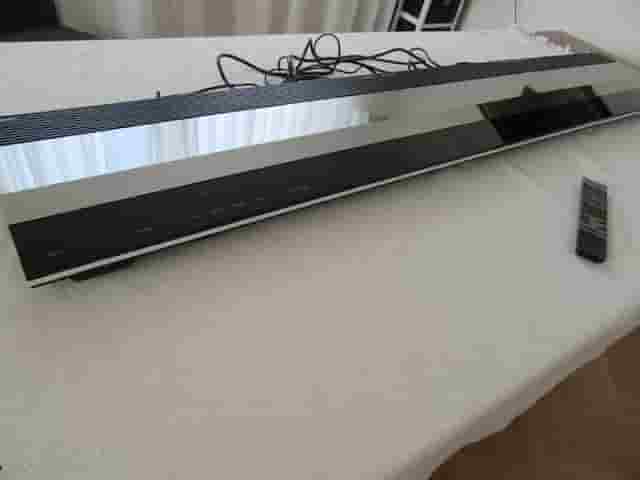
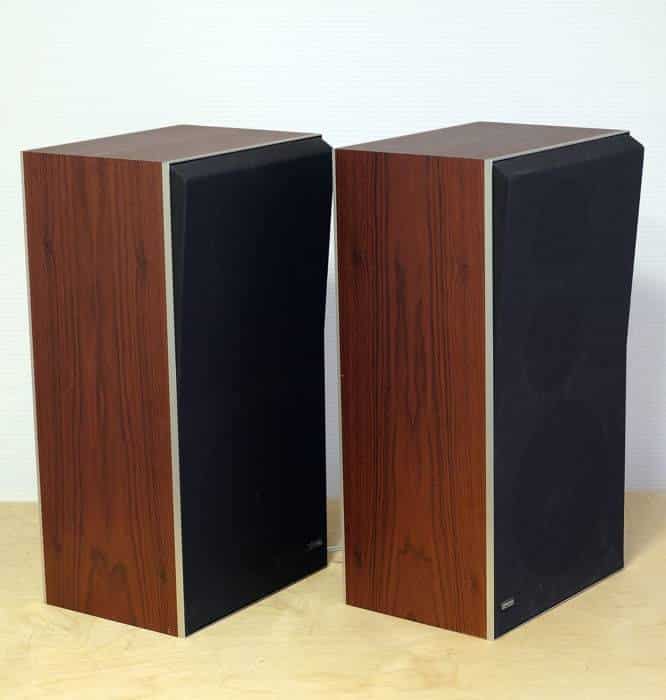
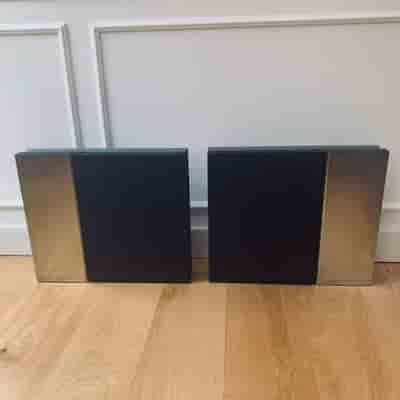

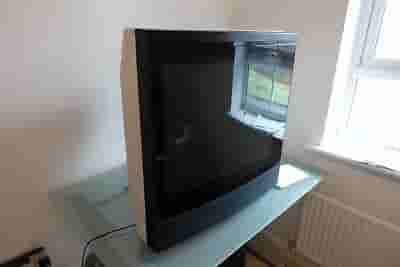
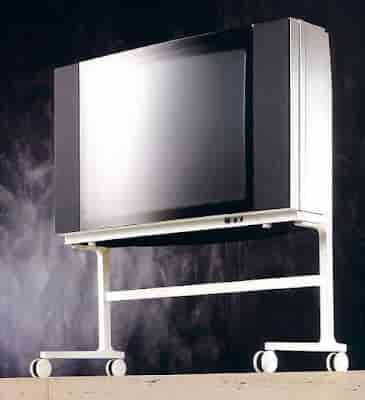
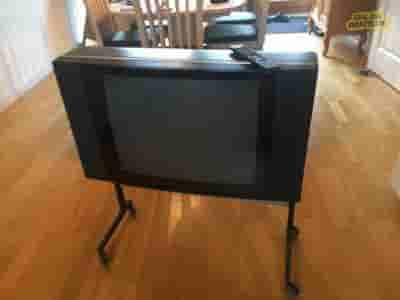





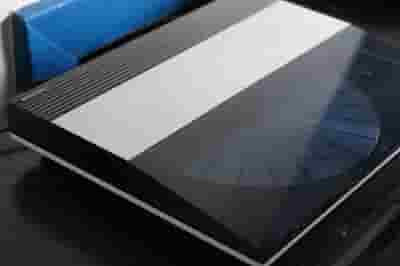










.jpg)



0 Comments